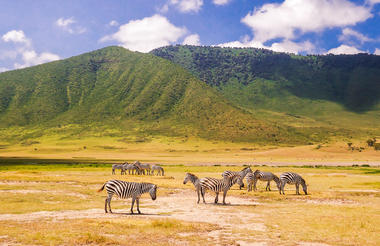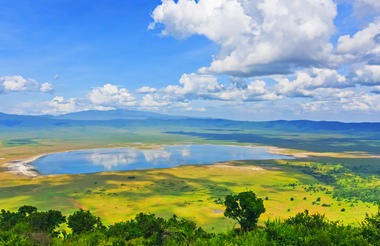You will be met on arrival at Kilimanjaro Airport and transferred to Keys Hotel for overnight.



An early morning briefing at your Moshi hotel kick starts your safari, before you head off away from the main safari route of the northern circuit, to Tarangire National Park, a true hidden gem. (Driving time 3-4 hours)
Highly underrated, yet bursting with a dense wildlife population, it won’t take you long to appreciate just why we love Tarangire. It’s a special park, virtually untouched, with far fewer visitors than the world famous Serengeti and Ngorongoro. During the dry season (June to September) thousands of animals including elephant, buffalo, giraffe, wildebeest, kudu, and the rarely seen oryx migrate from the dry Maasai steppe to the Tarangire River in search of water.
Lion, leopard and other predators follow, so be sure to charge your camera battery and empty your memory stick as some unique memories are waiting to be made. With impressive landscapes dominated by baobab trees, an enormous elephant population and over 550 varieties of bird, Tarangire offers secluded game viewing and loads of game – a winning combination in anyone's book!
From Tarangire, head up through the beautiful highlands to the farm rich area of Karatu on the outer slopes of Ngorongoro crater. (Driving time via Manyara +- 1 hour)
Overnight at Bougainvillea Lodge.



Incredible and unforgettable, today is surely one you’ve been itching to tick off your African travel bucket list. One of the natural wonders of the world, the volcanic caldera of Ngorongoro offers spectacular game viewing in the crater. We can almost guarantee you four of the Big Five will show up, as well as a rich variety of birds, all viewed against the backdrop of the thickly forested crater walls. Varied terrains and dramatic landscapes consisting of forest, grasslands and both freshwater and soda lakes make the Ngorongoro Crater a true marvel of creation. Your picnic lunch on the crater floor will forever remain a unique memory.
Continue onto the central Serengeti.
The Serengeti is home to more than three million large mammals spread over vast endless plains. It is here that we may encounter the fascinating spectacle of the annual wildebeest migration, where one and quarter million wildebeest trek in columns of up to forty kilometres long in search of grazing, drawing with them plenty predators and numerous other species of game.
From January to March the herds can largely be found birthing their young in the southern area around Ndutu, before proceeding north through the centre and Western Corridor during June and July, eventually splitting to the west and north as they continue their way toward the Mara River. August to October sees dramatic river crossings which can only be considered Africa’s “greatest leap of faith”, before the herds return south in November to repeat this amazing instinctive procession all over again.
Overnight at Kiota Camp.



Morning
Continue onto the Northern Serengeti, where you will check in to Serengeti North Wilderness Camp and spend 5 nights enjoying game drives and exploring this region of the park.
The camp is well positioned for guests to experience the epic Mara river crossings that normally occur at this time of the migration cycle.



Transfer from camp to Kogatende airstrip for your scheduled light aircraft flight back to Kilimanjaro Airport.




